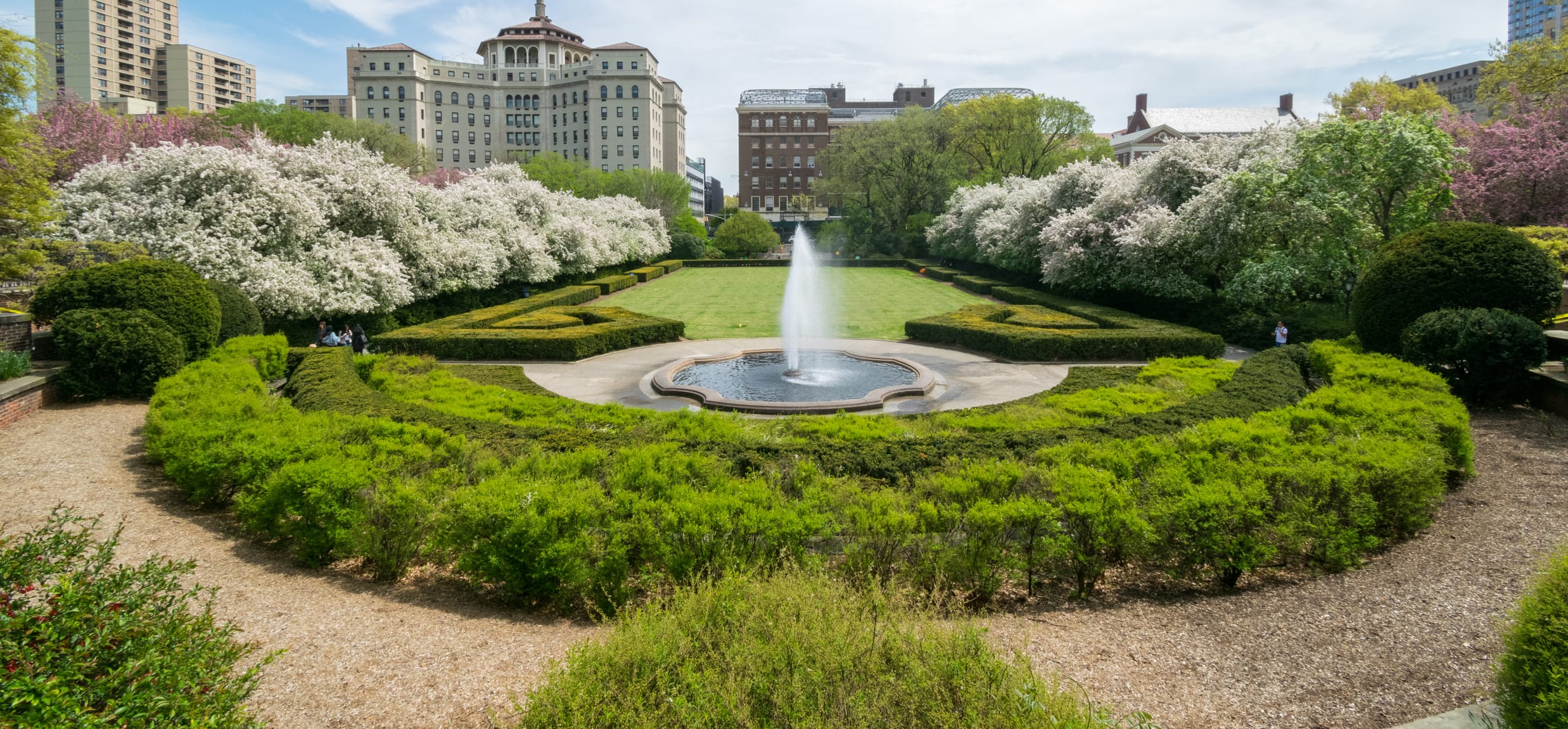Magazine
Restoring the Dairy, Naumburg Bandshell, and Other Beloved Park Features

The Conservancy’s staff of planning, design, and preservation professionals work year-round to restore and maintain Central Park’s landscapes, architectural features, and recreation facilities. This work is done in partnership with the public—preserving the Park’s original ideals while enhancing the experience for today’s visitors. Discover what Park features and destinations we’re improving this fall.
The Dairy
The Dairy, which today houses a visitor center and gift shop, belongs to the Park’s Children’s District—also home to Playmates Arch, Heckscher Playground and Ballfields, Chess & Checkers House, and the Carousel.

Children and their caregivers could buy fresh milk and snacks and borrow games from the Dairy, designed by Park co-designer Calvert Vaux and built between 1869 and 1871.
The Park’s designers, Frederick Law Olmsted and Calvert Vaux, created the Children’s District to support kids and their caregivers. They added the Dairy, a charming Victorian cottage designed by Vaux and built between 1869 and 1871, to the heart of this area. Families could enjoy refreshments under the Dairy’s loggia (open-air porch) and take in cool breezes from the nearby pond.
By the 1950s, the building had fallen into disrepair. NYC Parks tore down the loggia and turned the building into a maintenance shed. The Dairy then became Central Park's first visitor center in 1979 and was one of the Conservancy’s first restoration projects. At that time, we restored the building’s colorful loggia.

The Dairy Visitor Center & Gift Shop became the Park’s first visitor center in 1979.
Our latest restoration of the Dairy includes repairing, cleaning, and repointing the exterior masonry; replacing and waterproofing the roof; repairing and restoring the loggia; and adding new windows and doors, including an accessible entrance door. New mechanical systems and upgrades will provide for climate-control of the renovated interior, and staff and support space will be reconfigured to provide an accessible staff restroom.
Robert Bendheim Playground
Robert Bendheim Playground is a play space near the East Meadow for pre-school and school-age kids. It contains a central play structure, sandbox and sand tables, swings and bucket swings, and a water spray feature.

Designed to be accessible for children with and without disabilities, Robert Bendheim Playground features a spiral water spray, sandbox, swings, and more.
Playground accessibility standards have become more specific since we last reconstructed Bendheim Playground in 1997. With our latest renovation of this playground, we'll ensure this beloved play space is accessible under current guidelines and fix overall wear and tear from decades of use.
Our work will include regrading and repaving the playground; replacing the play structure, safety surface, playground gate, and drinking fountain to meet current accessibility and safety standards; refurbishing the sandbox and water spray feature; adding new landscape plantings; and more.
Naumburg Bandshell
Naumburg Bandshell has called the north end of the Mall home since 1923 (although an earlier ornamental cast-iron bandstand originally existed in the vicinity). This area, historically known as the Concert Ground, has always been a popular place for music performances. For nearly a century now, the Naumburg Bandshell has been a favorite venue for concerts and events.

The Naumburg Bandshell, shown here in 1934, has been a beloved venue for concerts and events for nearly 100 years.
While the Bandshell has had some limited repairs over the years, our latest restoration is far more comprehensive than any past Conservancy efforts. Our work will restore lost architectural features, repair the concrete and limestone masonry, and help preserve the integrity of the structure for years to come.
Conservatory Garden
The Conservatory Garden is one of Central Park’s most celebrated destinations. Originally conceived by Olmsted and Vaux as part of an informal arboretum that would have stretched from the current site of the East Meadow up to 106th Street, the Garden began as a nursery to grow plants for the Park. The site was home to several greenhouses and eventually replaced by an ornate glass conservatory (the origin of the Garden’s name). After falling into disrepair, it was demolished in the early 1930s. Shortly afterward, the six-acre formal outdoor garden that we know today was created.

The Conservatory Garden, shown here in 1937, was not a part of the Park’s original design. The area has been home to a nursery, greenhouses, and a glass conservatory. Photo courtesy of NYC Parks Photo Archive
The Conservatory Garden’s last significant restoration in 1983 was primarily focused on horticulture. Our current restoration will largely focus on improving the Garden’s hardscapes—such as its pavements, retaining walls, and stairs—that are almost all original to its 1937 construction and have not been comprehensively addressed since then.
The work, taking place in phases over the next couple years, will include upgrading infrastructure, restoring the Garden’s unique architectural and decorative features like its Wisteria Pergola, creating universal accessibility into the sunken North Garden by converting stairs to ramps, and ensuring all aspects of the Garden meet current code requirements, and more.



